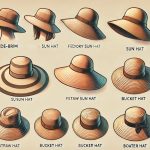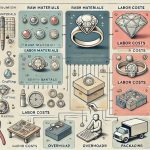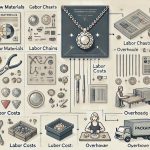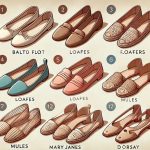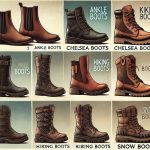Skirts are a versatile and essential part of many women’s wardrobes, offering a wide range of styles suitable for various occasions. From casual wear to formal events, skirts can be tailored to fit different tastes and preferences. The production of skirts involves several steps and materials, each contributing to the overall cost.
How Skirts are Produced
Skirt production involves several stages, from conceptual design to the final product hitting the shelves. It is a complex process that requires a combination of creativity, technical skill, and attention to detail. The process can vary depending on the type of skirt being produced, the materials used, and the scale of production. However, the fundamental steps remain consistent across different manufacturing environments.
Design and Concept Development
Before a skirt can be produced, it must be designed. This is the first and perhaps most crucial step in the production process.
Inspiration and Research
Designers often begin by gathering inspiration from various sources such as fashion trends, historical styles, and cultural influences. This stage also involves research into fabrics, colors, and potential markets. Designers create mood boards and sketches to visualize their ideas.
Sketching and Prototyping
Once the concept is developed, designers create detailed sketches of the skirt, which are then translated into technical drawings. These drawings include precise measurements and construction details. A prototype, often called a toile or muslin, is then created. This allows the designer to see the garment in 3D and make any necessary adjustments before moving on to full-scale production.
Pattern Making and Grading
After the design is finalized, the next step is to create a pattern, which serves as the blueprint for the skirt.
Creating the Master Pattern
A skilled pattern maker takes the designer’s sketches and measurements to create a master pattern. This pattern is typically made on a sturdy material like cardboard and includes all the different pieces that will be cut out of the fabric. The pattern must be precise to ensure that the skirt fits correctly and looks as intended.
Grading the Pattern
Once the master pattern is created, it is graded to produce patterns in different sizes. Grading involves adjusting the pattern to fit a range of sizes while maintaining the proportions of the design. This step is crucial for producing skirts that can be sold in multiple sizes without distorting the original design.
Fabric Selection and Cutting
The choice of fabric is a critical decision that affects the skirt’s appearance, feel, and durability.
Selecting the Fabric
Fabrics are chosen based on the design requirements and the intended use of the skirt. Common fabrics for skirts include cotton, silk, wool, and synthetic blends. The fabric’s weight, drape, and texture are all considered to ensure it complements the design. Sometimes, fabrics are pre-washed or treated to prevent shrinkage and ensure colorfastness.
Cutting the Fabric
Once the fabric is selected, it is laid out on a cutting table, and the pattern pieces are placed on top. The fabric is then cut according to the pattern using scissors or a fabric-cutting machine. Accuracy in this step is essential to avoid wasting fabric and to ensure that all pieces fit together correctly during assembly.
Assembly and Sewing
After the fabric is cut, the pieces are assembled and sewn together to form the skirt.
Assembling the Pieces
The cut fabric pieces are pinned or basted together to check for fit and alignment. This step allows for final adjustments before the pieces are permanently sewn. For skirts with linings or multiple layers, each layer is assembled separately and then joined together.
Sewing the Skirt
The assembly is followed by sewing, where the pieces are stitched together using a sewing machine. Seams are finished to prevent fraying, and any additional elements such as zippers, buttons, or trims are attached. The sewing process requires precision to ensure that the skirt is durable and that the seams are neat and strong.
Finishing and Quality Control
The final stages of skirt production involve finishing touches and rigorous quality control to ensure the garment meets the desired standards.
Pressing and Finishing Touches
Once the skirt is sewn, it is pressed to remove wrinkles and set the seams. Finishing touches, such as hemming, adding labels, or attaching decorative elements, are completed at this stage. The skirt is then inspected for any loose threads, uneven seams, or other imperfections that need to be corrected.
Quality Control and Packaging
Before the skirts are packaged and sent to retailers, they undergo a final quality control check. This involves a thorough inspection of each skirt to ensure it meets the manufacturer’s standards. Skirts that pass the inspection are then folded, tagged, and packaged for distribution.
Production Cost Distribution
The production cost of skirts typically includes:
- Materials (40-50%): This includes the fabric (cotton, silk, polyester, etc.), threads, buttons, zippers, and other trims.
- Labor (20-30%): Costs related to cutting, sewing, and assembling the skirts.
- Manufacturing Overheads (10-15%): Includes costs for machinery, factory overheads, and quality control.
- Shipping and Logistics (5-10%): Costs associated with transporting raw materials and finished products.
- Marketing and Other Costs (5-10%): Includes marketing, packaging, and administrative expenses.
Types of Skirts

1. A-Line Skirts
Overview
A-line skirts are named for their shape, which resembles the letter “A.” These skirts are fitted at the waist and gradually widen towards the hem, creating a flattering silhouette. A-line skirts can be made from various materials and are suitable for both casual and formal occasions.
Popular Brands
| Brand | Established | Location |
|---|---|---|
| J.Crew | 1947 | New York, USA |
| Banana Republic | 1978 | San Francisco, USA |
| H&M | 1947 | Stockholm, Sweden |
| Zara | 1974 | Arteixo, Spain |
| Uniqlo | 1949 | Tokyo, Japan |
Averaged Retail Price on Amazon
- $30 – $80
Market Popularity
A-line skirts are highly popular due to their flattering fit and versatility. They are a staple in many wardrobes and are worn for a variety of occasions, from work to social gatherings.
Production Details
- White Label Production Cost in China: $8.00 – $15.00 per unit
- Product Weight: 200 – 300 grams
- Minimum Order Quantity: 500 units
- Major Materials: Cotton, polyester, silk, zippers, buttons
2. Pencil Skirts
Overview
Pencil skirts are fitted skirts that typically fall to the knee or slightly below. They are known for their sleek and professional appearance, making them a popular choice for office wear and formal events. Pencil skirts can be made from various materials, including stretch fabrics for added comfort.
Popular Brands
| Brand | Established | Location |
|---|---|---|
| Calvin Klein | 1968 | New York, USA |
| Theory | 1997 | New York, USA |
| Ralph Lauren | 1967 | New York, USA |
| Ann Taylor | 1954 | New Haven, USA |
| J.Crew | 1947 | New York, USA |
Averaged Retail Price on Amazon
- $40 – $100
Market Popularity
Pencil skirts are very popular in professional settings due to their polished and elegant look. They are a staple in business attire and are also worn for formal occasions.
Production Details
- White Label Production Cost in China: $10.00 – $20.00 per unit
- Product Weight: 250 – 350 grams
- Minimum Order Quantity: 500 units
- Major Materials: Stretch cotton, polyester, wool, zippers, buttons
3. Maxi Skirts
Overview
Maxi skirts are long skirts that typically reach the ankles or floor. They are known for their flowy and comfortable fit, making them ideal for casual wear, beach outings, and summer events. Maxi skirts can be made from lightweight fabrics such as cotton, chiffon, or rayon.
Popular Brands
| Brand | Established | Location |
|---|---|---|
| Free People | 1984 | Philadelphia, USA |
| Anthropologie | 1992 | Philadelphia, USA |
| Zara | 1974 | Arteixo, Spain |
| H&M | 1947 | Stockholm, Sweden |
| ASOS | 2000 | London, UK |
Averaged Retail Price on Amazon
- $30 – $70
Market Popularity
Maxi skirts are popular for their comfort and versatility. They are often worn during the warmer months and are favored for their relaxed, bohemian style.
Production Details
- White Label Production Cost in China: $8.00 – $15.00 per unit
- Product Weight: 300 – 400 grams
- Minimum Order Quantity: 500 units
- Major Materials: Cotton, chiffon, rayon, elastic waistbands
4. Mini Skirts
Overview
Mini skirts are short skirts that typically fall above the knee. They are known for their youthful and playful appearance, making them a popular choice for casual wear, parties, and nights out. Mini skirts can be made from various materials, including denim, leather, and cotton.
Popular Brands
| Brand | Established | Location |
|---|---|---|
| Topshop | 1964 | London, UK |
| Urban Outfitters | 1970 | Philadelphia, USA |
| Forever 21 | 1984 | Los Angeles, USA |
| Zara | 1974 | Arteixo, Spain |
| H&M | 1947 | Stockholm, Sweden |
Averaged Retail Price on Amazon
- $20 – $50
Market Popularity
Mini skirts are highly popular among young women and are often worn for casual outings and social events. They are a staple in summer wardrobes and are favored for their fun and trendy style.
Production Details
- White Label Production Cost in China: $6.00 – $10.00 per unit
- Product Weight: 150 – 250 grams
- Minimum Order Quantity: 500 units
- Major Materials: Denim, leather, cotton, zippers, buttons
5. Pleated Skirts
Overview
Pleated skirts feature pleats that add texture and volume to the garment. These skirts can range from short to long lengths and are suitable for both casual and formal occasions. Pleated skirts are often made from lightweight fabrics that enhance the movement of the pleats.
Popular Brands
| Brand | Established | Location |
|---|---|---|
| Prada | 1913 | Milan, Italy |
| Gucci | 1921 | Florence, Italy |
| J.Crew | 1947 | New York, USA |
| ASOS | 2000 | London, UK |
| H&M | 1947 | Stockholm, Sweden |
Averaged Retail Price on Amazon
- $40 – $100
Market Popularity
Pleated skirts are popular for their elegant and classic style. They are often worn for work, formal events, and casual outings, providing a sophisticated and polished look.
Production Details
- White Label Production Cost in China: $10.00 – $20.00 per unit
- Product Weight: 250 – 350 grams
- Minimum Order Quantity: 500 units
- Major Materials: Polyester, silk, cotton, zippers, buttons
6. Wrap Skirts
Overview
Wrap skirts are designed to wrap around the body and are secured with ties or buttons. They offer an adjustable fit and are known for their versatile and stylish appearance. Wrap skirts can be made from various fabrics, including cotton, silk, and rayon.
Popular Brands
| Brand | Established | Location |
|---|---|---|
| Diane von Furstenberg | 1972 | New York, USA |
| Reformation | 2009 | Los Angeles, USA |
| Madewell | 1937 | New York, USA |
| Free People | 1984 | Philadelphia, USA |
| Anthropologie | 1992 | Philadelphia, USA |
Averaged Retail Price on Amazon
- $40 – $100
Market Popularity
Wrap skirts are popular for their adjustable fit and stylish look. They are often chosen for both casual and semi-formal occasions, providing a chic and feminine style.
Production Details
- White Label Production Cost in China: $10.00 – $20.00 per unit
- Product Weight: 200 – 300 grams
- Minimum Order Quantity: 500 units
- Major Materials: Cotton, silk, rayon, ties, buttons
7. High-Waisted Skirts
Overview
High-waisted skirts sit above the natural waistline, creating a flattering and elongated silhouette. These skirts can come in various lengths and styles, making them suitable for both casual and formal occasions.
Popular Brands
| Brand | Established | Location |
|---|---|---|
| Topshop | 1964 | London, UK |
| ASOS | 2000 | London, UK |
| Zara | 1974 | Arteixo, Spain |
| H&M | 1947 | Stockholm, Sweden |
| Forever 21 | 1984 | Los Angeles, USA |
Averaged Retail Price on Amazon
- $30 – $80
Market Popularity
High-waisted skirts are highly popular for their flattering fit and versatile style. They are often worn with crop tops, blouses, and sweaters, making them a staple in many wardrobes.
Production Details
- White Label Production Cost in China: $8.00 – $15.00 per unit
- Product Weight: 200 – 300 grams
- Minimum Order Quantity: 500 units
- Major Materials: Cotton, polyester, wool, zippers, buttons
8. Circle Skirts
Overview
Circle skirts are designed to form a complete circle when laid flat, providing a full and voluminous look. These skirts are often made from lightweight fabrics and are popular for their playful and retro style.
Popular Brands
| Brand | Established | Location |
|---|---|---|
| ModCloth | 2002 | Pittsburgh, USA |
| Unique Vintage | 2000 | Burbank, USA |
| Hell Bunny | 2003 | London, UK |
| Collectif | 2000 | London, UK |
| Voodoo Vixen | 2000 | Los Angeles, USA |
Averaged Retail Price on Amazon
- $30 – $70
Market Popularity
Circle skirts are popular for their retro and playful style. They are often worn for casual outings and themed events, providing a fun and fashionable look.
Production Details
- White Label Production Cost in China: $8.00 – $15.00 per unit
- Product Weight: 200 – 300 grams
- Minimum Order Quantity: 500 units
- Major Materials: Cotton, polyester, elastic waistbands
9. Tiered Skirts
Overview
Tiered skirts feature multiple layers of fabric, creating a voluminous and textured look. These skirts can range from short to long lengths and are popular for their unique and stylish appearance.
Popular Brands
| Brand | Established | Location |
|---|---|---|
| Free People | 1984 | Philadelphia, USA |
| Anthropologie | 1992 | Philadelphia, USA |
| Zara | 1974 | Arteixo, Spain |
| H&M | 1947 | Stockholm, Sweden |
| ASOS | 2000 | London, UK |
Averaged Retail Price on Amazon
- $40 – $100
Market Popularity
Tiered skirts are popular for their unique and fashionable style. They are often worn for casual outings, festivals, and special occasions, providing a distinctive and stylish look.
Production Details
- White Label Production Cost in China: $10.00 – $20.00 per unit
- Product Weight: 250 – 350 grams
- Minimum Order Quantity: 500 units
- Major Materials: Cotton, polyester, rayon, elastic waistbands

